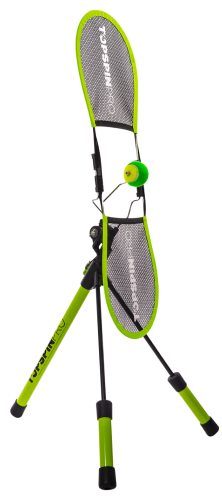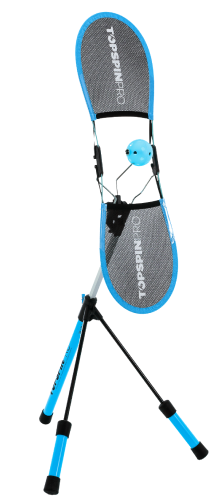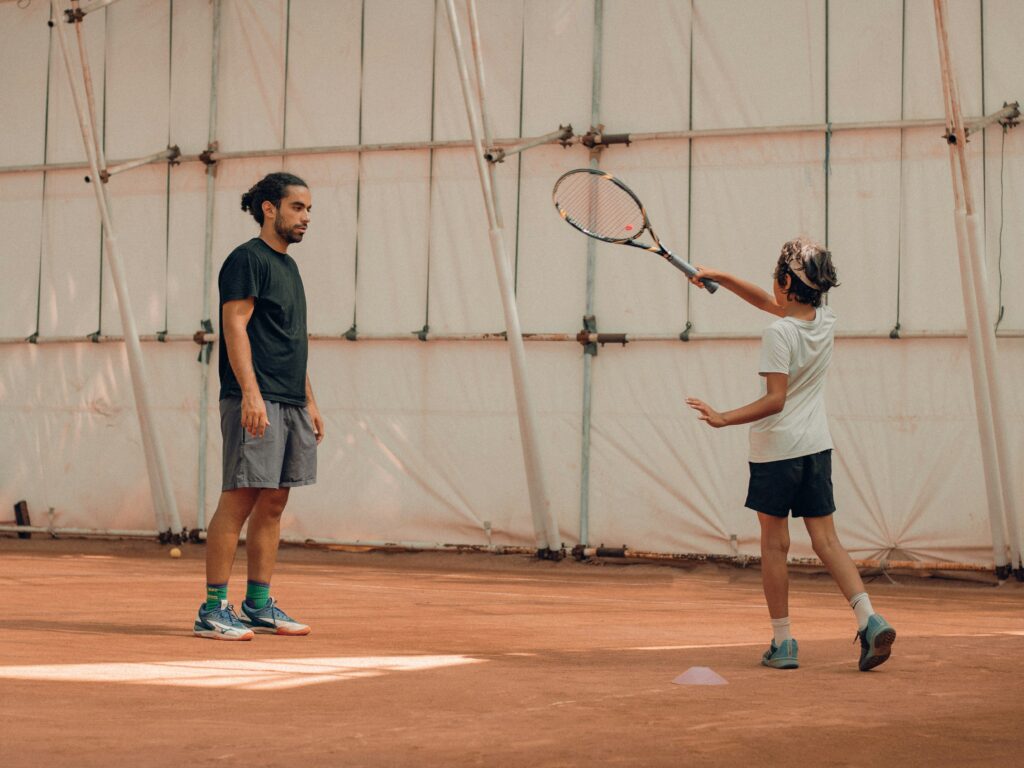Every parent who introduces their child to tennis dreams of seeing them light up on court, running with energy, smiling after a good shot, and asking, “Can we play again tomorrow?” But for many families, the reality is different. If the early experiences are negative, tennis can quickly feel like a battle, with parents dragging reluctant kids to lessons or practice.
Tennis is a uniquely challenging sport. Unlike many games where children can pick up the basics quickly, tennis requires coordination, timing, footwork, and technique all at once. Without the right approach, that can be completely overwhelming to a child. Just one or two discouraging sessions may be enough for them to decide the sport “isn’t for them.”
The good news is that it doesn’t have to be this way. With patience, the right environment, and a teaching style that prioritizes fun and confidence, you can guide your child past those early hurdles and into the stage where tennis feels exciting, rewarding, and truly enjoyable.
Why Kids Should Play Tennis
Tennis is one of the best sports for children because it combines fun, fitness, and valuable life skills. It teaches kids how to stay active while developing coordination, balance, and agility.
More importantly, tennis builds resilience, every point is a chance to try again, so mistakes become learning opportunities instead of setbacks. Children learn independence by making their own decisions on court, problem-solving under pressure, and managing their emotions in real time. Add in the social benefits of playing with friends and the confidence boost from early successes, and tennis becomes a sport kids truly enjoy and want to keep playing.
It's also a game that can be played for life, unlike many of the sports they learn as a child so is a great investment for long term enjoyment.
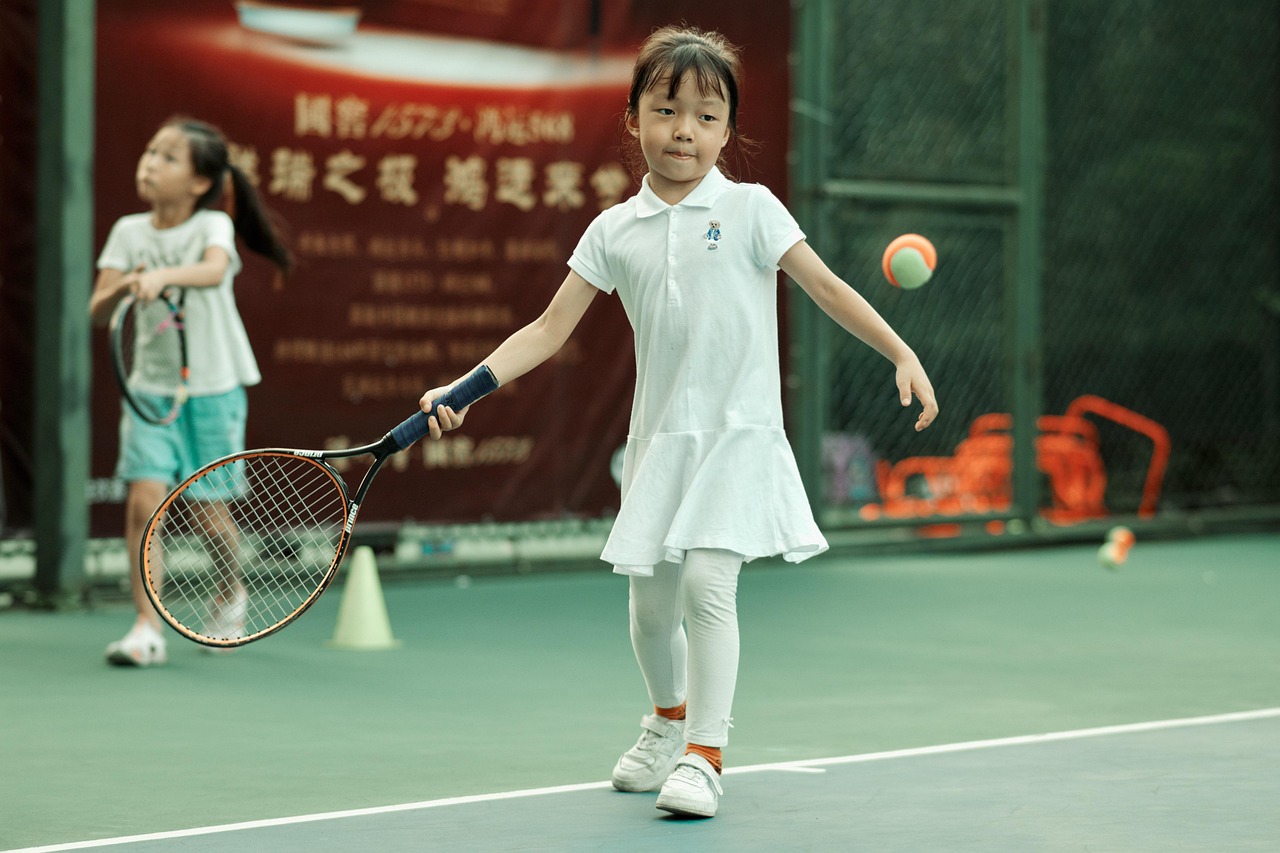
1. Start With Mini Tennis
Children are rarely ready to succeed if they’re handed a full-size racket and asked to hit a heavy ball over a regulation net. Mini tennis solves this problem by scaling the game to their size. Smaller rackets, lighter and softer balls that don't bounce as high or as fast, and courts that match their movement ability make the game easier to grasp and more enjoyable.
This approach allows kids to learn the correct technique with success from the very beginning, instead of feeling like they’re constantly “missing.”
Here's A Parent's Guide To Mini Tennis And Equipment for more in-depth information on choosing the right equipment for your child and the best way to practice.
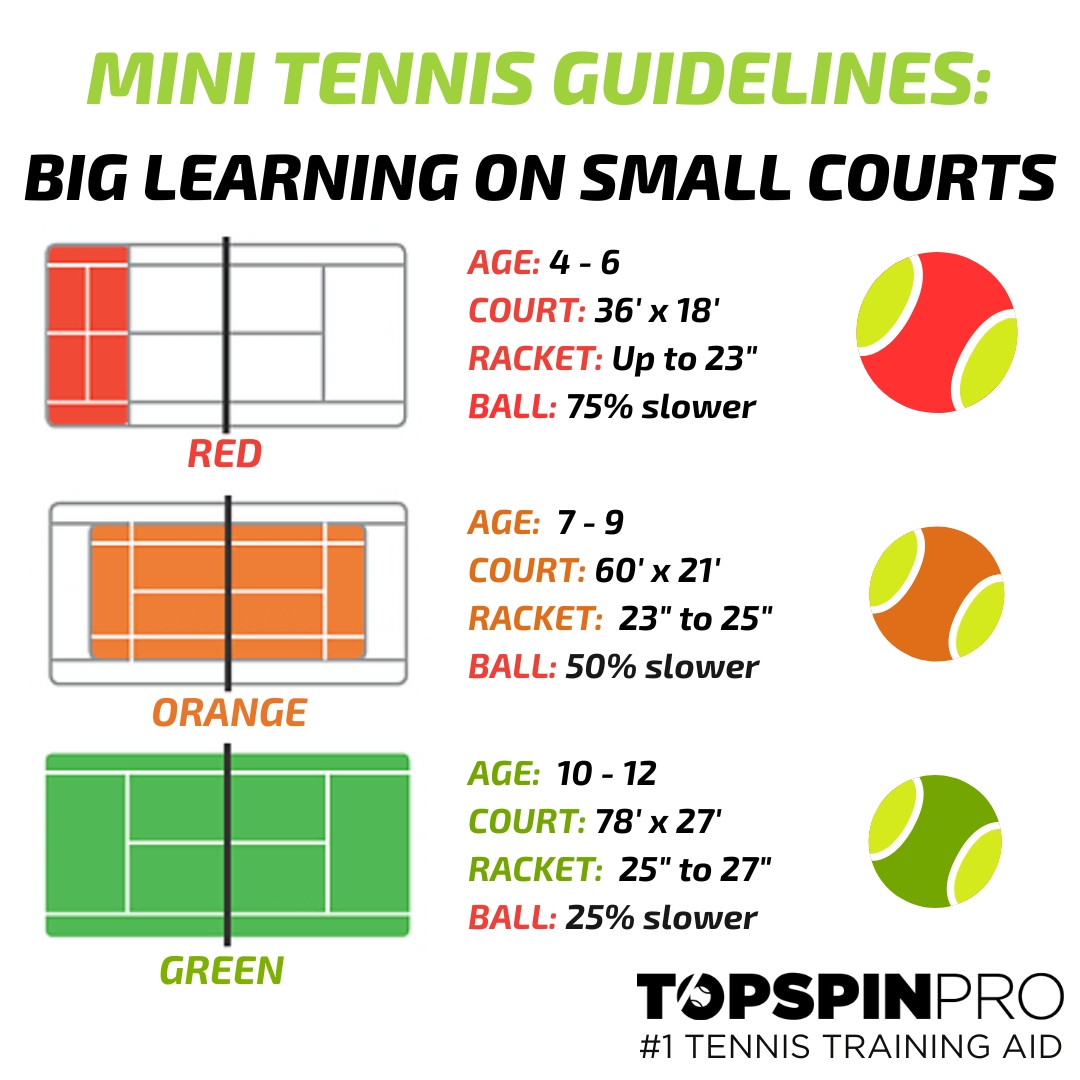
2. Use Progressions
Pair mini tennis with progressions. Using progressions means breaking skills down into small, manageable steps and then gradually adding more challenge as the child improves. For example, you might start with using a stationary ball on the TopspinPro to practice their contact point and then move to some drop feeds and eventually mini rallies. Each stage builds confidence without overwhelming them. By layering skills step by step, kids stay motivated and excited as they feel themselves getting better. It's important for them to experience success.
👉 Want to dive deeper? Check out How To Improve Tennis Fast: Skill Progression Guide for a full breakdown of how to use progressions effectively in practice.
3. Make Fun the Priority
It’s natural to want your child to “do it right”, but early on, their love of tennis matters far more than technical precision. Focus on fun, movement, and play. Games like “catch with the racket,” “hit the cone,” or rally challenges (how many shots in a row can we get?) keep sessions lighthearted while still teaching valuable skills. Give them challenges but make sure they have success. Children are much more likely to stick with an activity if it feels like a game, not a lesson. Remember: enjoyment comes first, technique can be refined later.
4. Celebrate Small Wins
A child’s sense of progress often comes from small victories. Hitting the ball over the net for the first time, keeping it in the air three times in a row, or hitting a cone can all be a real highlight to a child. When you acknowledge these achievements with enthusiasm, a high five, a smile, or simple words like “That was awesome!” you reinforce positive emotions and encourage persistence. Confidence builds when children feel their effort is recognized. The more confident they become, the more likely they are to stick with tennis long enough to discover true enjoyment.
5. Find Extra Ways To Practice
Developing as a tennis player goes far beyond simply hitting forehands, serves, or backhands on the court. For children especially, building a broad base of general coordination skills, like balance, agility, and hand–eye coordination, is just as important as practicing traditional strokes. These abilities give them the foundation for tennis.
The good news is that progress doesn’t have to stop when the lesson ends. There are plenty of ways for kids to reinforce their skills at home in a fun, low-pressure environment. Games that involve throwing, catching or running all contribute to tennis development. And when you add in tennis-specific training aids such as the TopspinPro, children can safely practice proper swing shapes, technique, and timing without needing a hitting partner or court. This combination of general coordination play and focused home training not only accelerates learning but also helps children stay engaged and enjoy their journey in tennis.

6. Keep Sessions Short
Children’s attention spans are naturally limited. A 10–15 minute activity packed with fun is often more effective than a 45-minute drill session. Break practice into short bursts of different activities, rallying, a fun target game, a race to pick up balls, so your child never feels bored or overwhelmed. End each session on a positive note, even if it means finishing after a successful rally rather than pushing through fatigue. If they leave the court smiling and wanting more, you’ve succeeded. They will also see more progress for 10 minutes a day practice at home that one full hour per week.
Try some of these Kids Tennis Drills for extra inspiration!
7. Encourage Social Play
For most children, tennis becomes enjoyable when it’s not just about hitting a ball, but about connecting with others. Group lessons, family rallies, or “practice time" with friends turn the sport into a social activity. Like adults, kids often look forward to tennis because of the friendships they make on court. The camaraderie adds another dimension of fun that keeps them coming back.
8. Show Your Own Enthusiasm
Children mirror the energy of the adults around them. If you stand on the sidelines correcting every mistake, tennis will start to feel like a chore. But if you clap, cheer, and even grab a racket to join in occasionally, your child will feed off your positivity. Enthusiasm is contagious, let them see how much fun you think tennis can be. When you practice together find things in your own game to work on like feeding. Children love to know that they are helping you learn too.
9. Give Them Ownership
As children progress, it’s important to give them a growing sense of control. At the beginning, this can be as simple as letting them decide which game to play in practice, which target to aim for, or even something small like choosing the color of their racket grip. These choices may seem minor, but they make tennis feel personal and exciting. The sport starts to shift from being “something my parent signed me up for” into “my sport.”
As they become more regular players, you can deepen this sense of ownership by involving them in their own improvement process. Encourage them to reflect after practice or a match: “What went well today?” and “What’s one thing you’d like to get better at next time?” By identifying strengths and areas for growth themselves, children begin to think like problem-solvers rather than passive participants. This not only builds independence and confidence but also nurtures a mindset where they take pride in driving their own progress. Ultimately, the more invested they feel in their journey, the more likely they are to enjoy tennis and stick with it long term.
Parents' Guide With Confidence Course
If you’re a parent and want some extra support using the TopspinPro at home, we’ve created a guided video course just for you. It shows you how to introduce all the key tennis shots step by step, so you can help your child learn the right technique from the start without needing any coaching experience yourself.
Find Out More: Guide With Confidence: Helping Your Child Build Core Tennis Skills
Conclusion
Helping your child enjoy tennis is about more than technique. It’s about crafting an experience that feels fun, achievable, and rewarding. By starting with mini tennis, celebrating small successes, keeping practice playful, and encouraging social connections, you’ll guide them to that crucial stage where they actually look forward to stepping on the court. Once your child enjoys the process, skill development becomes natural, and that’s when tennis transforms from an activity into a lifelong passion and a sport that is "theirs" and not yours!
FAQs
-
Why is tennis challenging for children to learn initially?
Tennis requires coordination, timing, footwork, and technique all at once, which can be overwhelming for kids. Without the right approach, early negative experiences may cause them to lose interest quickly.
-
How does mini tennis help children learn better?
Mini tennis uses smaller rackets, lighter balls, and scaled-down courts, making it easier for kids to rally and play real games from the start. This builds confidence and reduces frustration.
-
Why should fun be prioritized over perfection in early tennis lessons?
Focusing on fun and play keeps sessions lighthearted and enjoyable, which encourages kids to stick with tennis. Technique can be refined later once they love the game.
-
How can parents support their child’s progress and confidence in tennis?
Celebrating small wins with enthusiasm and positive reinforcement builds a child’s confidence. Recognizing effort encourages persistence and makes tennis more rewarding.
-
What are effective ways to keep children engaged during tennis practice?
Keep sessions short, varied, and energetic with different fun activities and games. Ending on a positive note ensures children leave smiling and wanting more.
Enjoyed this article?
Be sure to sign up for our newsletter and we'll keep you up to date about new posts
